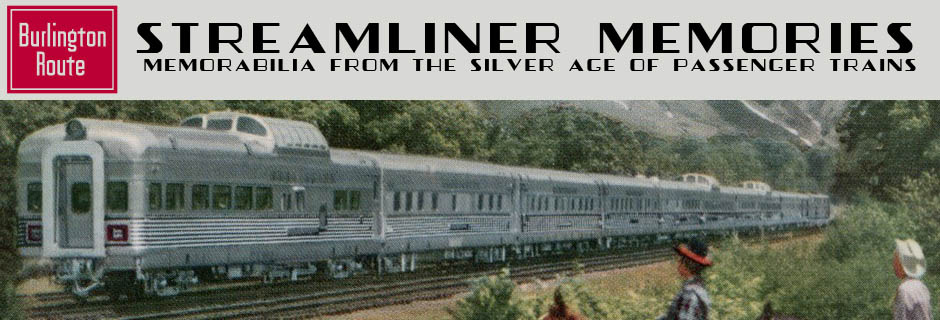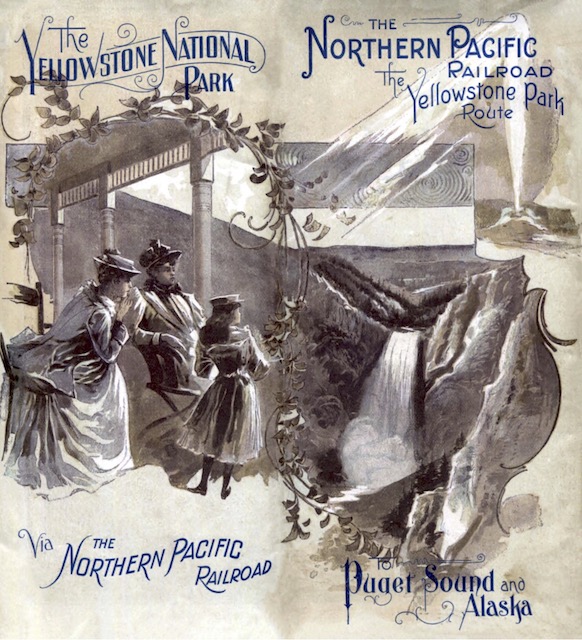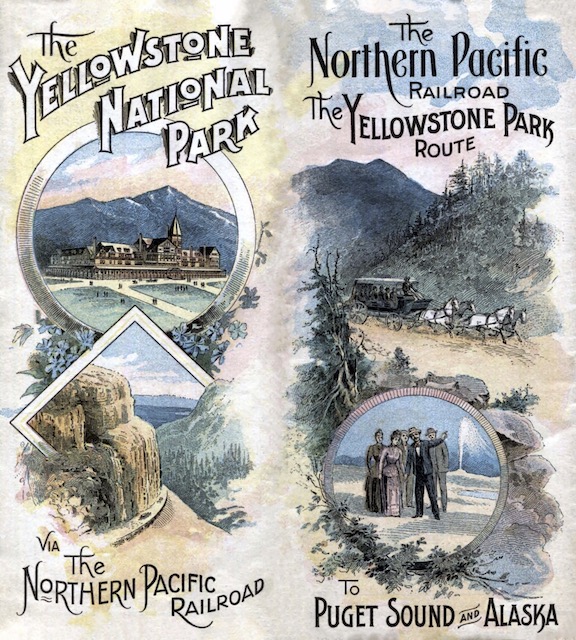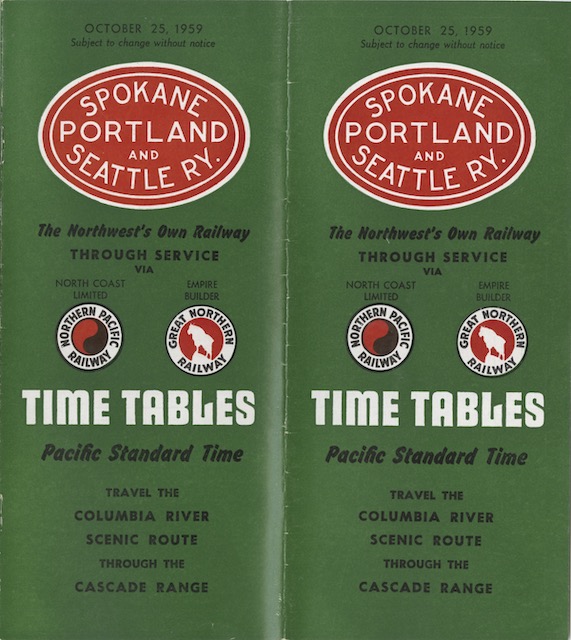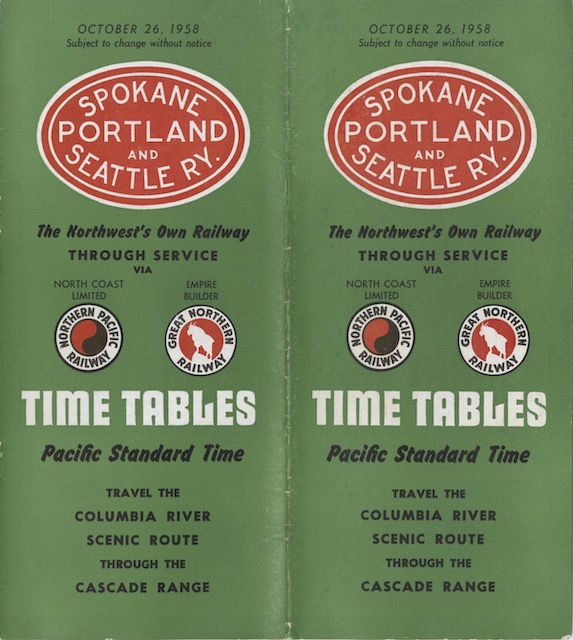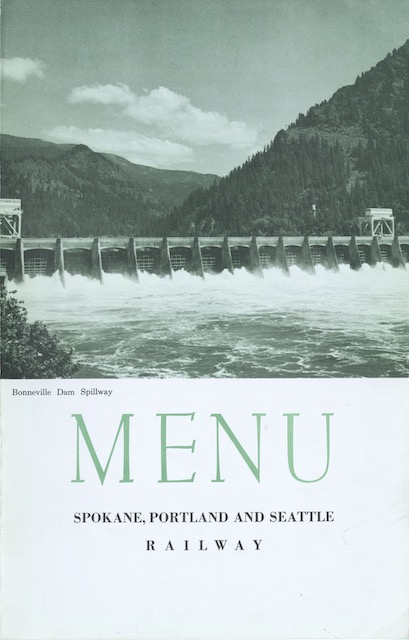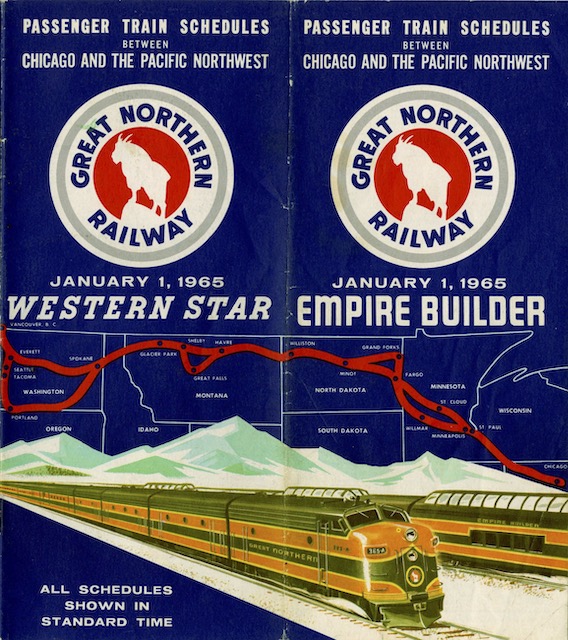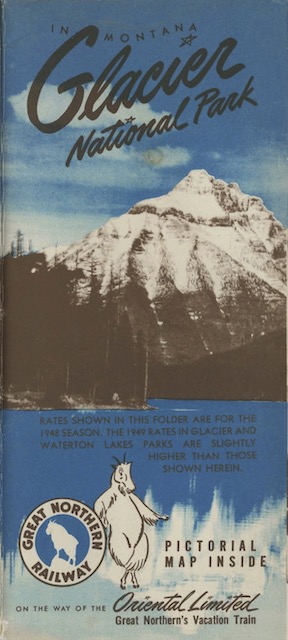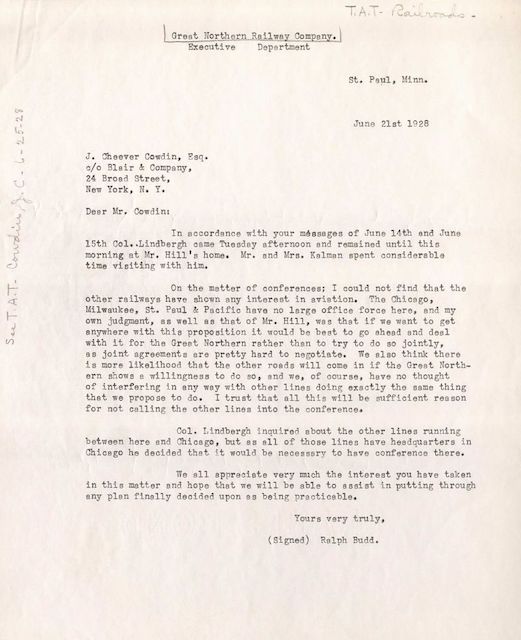This booklet lists two dozen conventions and festivals that were scheduled to take place in Portland, Seattle, Spokane, and Tacoma (plus two in Los Angeles) in 1909, from the Alaska-Yukon Pacific Exposition to the Western Bowling Congress. To encourage convention-goers to visit other parts of the Northwest, the booklet also lists dozens of hotels in 29 Northwest cities.
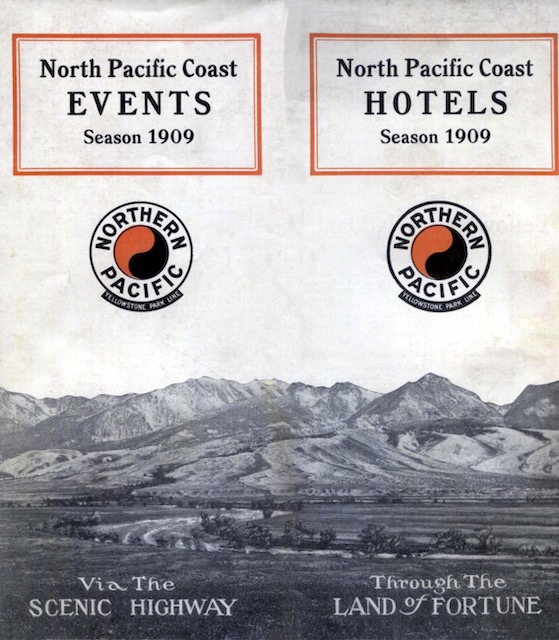 Click image to download a 3.9-MB PDF of this 12-page booklet.
Click image to download a 3.9-MB PDF of this 12-page booklet.
The back cover notes that NP in 1909 offered three transcontinental trains a day: The all-Pullman North Coast Limited (#1 & 2, “only 72 hours enroute” from Seattle to Chicago), the Northern Pacific Express (#3 & 4), and, in honor of the Alaska-Yukon Pacific Expo, the Exposition Special (#5 & 6). The booklet also mentions the Missouri River-Puget Sound Express (#15 & 16), which went over the Burlington between Kansas City and Billings and Northern Pacific between Billings and Seattle. Continue reading
